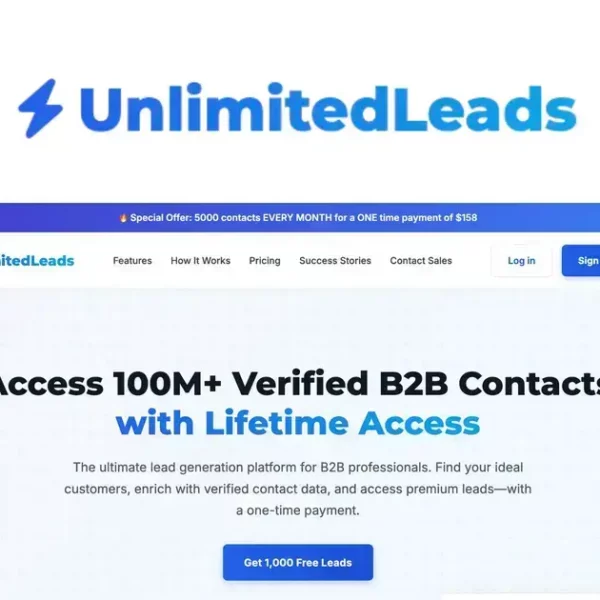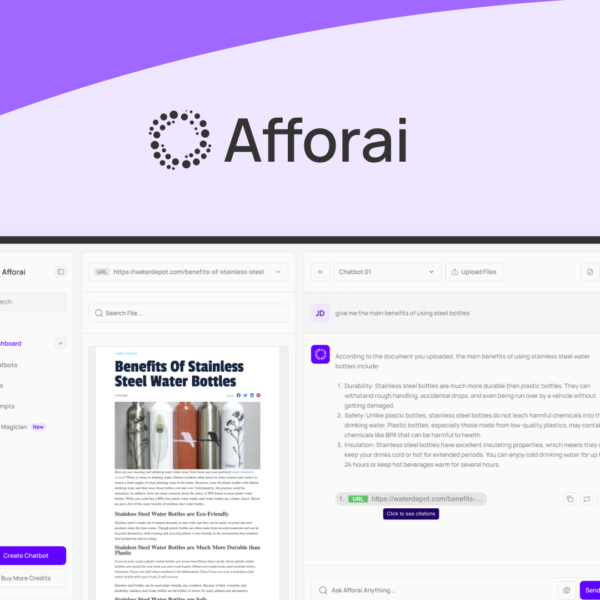When it comes to SaaS products, choosing the right lifetime deal can make a world of difference. You want a tool that not only serves your needs but stands the test of time. So, how do you decide? Let’s dive into some essential tips!
Do Your Homework on the Developer and the Company
Before you commit to a lifetime deal, it’s vital to do your homework on the developer and the company behind the product. This step can save you from future headaches. Look for reviews and feedback from existing users. Check if the company has a strong reputation within the community.
Research Company History
Find out how long the company has been in business. A well-established company is often more reliable. Newer companies can have great products, but they may lack support. Trade publications or tech forums are good places to start.
Examine User Feedback
User reviews can provide a realistic view of what to expect. Search for both positive and negative feedback. This gives a complete picture of the product’s performance and the company’s support. High ratings are good, but watch out for patterns in the complaints.
Look for Updates and Changes
Check the product’s update history. Regular updates show that the company is committed to improving its product. If they haven’t updated in a long time, this could be a red flag. An active company is a sign that they address user feedback and fix issues.
Contact Support
An easy way to gauge a company is to reach out to their support team. Ask questions and see how long it takes to get a response. Quick replies show a commitment to customer service. Poor support can mean trouble down the line if you run into issues.
Doing your homework can make all the difference when choosing a lifetime deal. You want peace of mind knowing that the tool you select can support your business now and in the future.
Check what Features Have Been Rolled Out Recently

When looking at a lifetime deal, it’s key to check what features have been rolled out recently. New features can show that a product is evolving. Companies that listen to their users tend to improve their products over time.
Explore Recent Updates
Look for a changelog or update history on the product’s website. This section lists new features, upgrades, or fixes. Regular updates can mean the company cares about keeping the product fresh and useful.
Test New Features
If possible, try out the new features. Many companies offer free trials. A hands-on approach helps you see if the updates meet your needs. Think about whether these features make your work easier or more efficient.
Community Feedback
Check community forums or social media for user feedback on recent features. Are users excited about them? Or are they having trouble? Real input from current users can provide insights that marketing materials may not show.
Consider Future Development
It’s also good to know if there are plans for future updates. Look for a roadmap on their site. This can tell you what’s coming next. If a company has exciting features lined up, it may be worth investing in now.
Staying informed about recent features ensures that the tool you choose stays relevant and useful for your needs.
Look at Their Roadmap
When considering a lifetime deal, looking at the company’s roadmap is crucial. A roadmap shows what features or improvements are planned for the future. It helps you understand where the product is headed.
Understanding the Roadmap
A roadmap typically outlines upcoming features and enhancements. You can often find it on the company’s website. This gives you insight into the company’s long-term vision. Knowing what’s in store can help you decide if this product fits your needs.
Checking for User Input
Some companies involve users in their roadmap planning. Look for sections where users can suggest ideas or vote on new features. This shows that the company values feedback. It often results in features that are genuinely needed by users.
Evaluate the Timeline
Roadmaps usually provide timelines for when new features will be available. This can help you determine how often updates happen. If a company has a clear schedule, they are more likely to keep their promises.
Long-Term Viability
Checking the roadmap can also reveal if the company has plans for growth. A well-planned roadmap hints at a company’s commitment to improving its product. If you see innovation on the horizon, it may be worth investing your time and money.
By looking at their roadmap, you can prepare and ensure the product will serve your business well in the future.
Chat with Their Support

Before you buy a lifetime deal, reaching out to customer support is a smart move. This can help you determine how responsive and helpful the company is. Good customer support can make a huge difference, especially when you run into issues.
Test Their Response Time
Send a question via email or online chat. Pay attention to how quickly they reply. Fast responses usually mean the company values its customers. If you wait too long, it might be a red flag.
Assess Their Knowledge
While chatting with support, ask specific questions about the product. A knowledgeable support team can explain features clearly. This shows they understand their product and can assist users effectively.
Check Their Availability
Look into their support hours. Do they offer assistance during your working hours? Some companies offer 24/7 support, while others may have limited availability. Make sure it aligns with your needs.
Read Customer Reviews
Check what other users say about their support experiences. Positive reviews about support can boost your confidence. On the other hand, frequent complaints might be a warning sign to consider.
Chatting with customer support can give you peace of mind. It helps you feel more secure in your purchase decision.
Decide Whether the Product Fills a Current or Upcoming Need
When considering a lifetime deal, think about whether the product meets your current or upcoming needs. This step is important to ensure you make a wise investment.
Identify Your Needs
First, list the tasks your business needs to accomplish. Knowing your requirements helps you evaluate the product better. Ask yourself if the software solves any problems you currently face.
Assess Future Projects
Think about any upcoming projects or plans. Will the product be useful for those too? If it can address future needs, it might be worth the investment. Trying to think ahead is always a smart move.
Look for Versatility
Check if the product is versatile enough to adapt to different tasks. A tool that can grow with your business is a big plus. If it can handle various situations, it’ll provide more value over time.
Check User Feedback
Read reviews to see how others are using the product. Look for comments on whether it meets current and future needs. This feedback can offer real-world insights that help in your decision-making process.
By deciding if the product fills a current or upcoming need, you’ll make a more informed choice. This can lead to better outcomes for your business.




